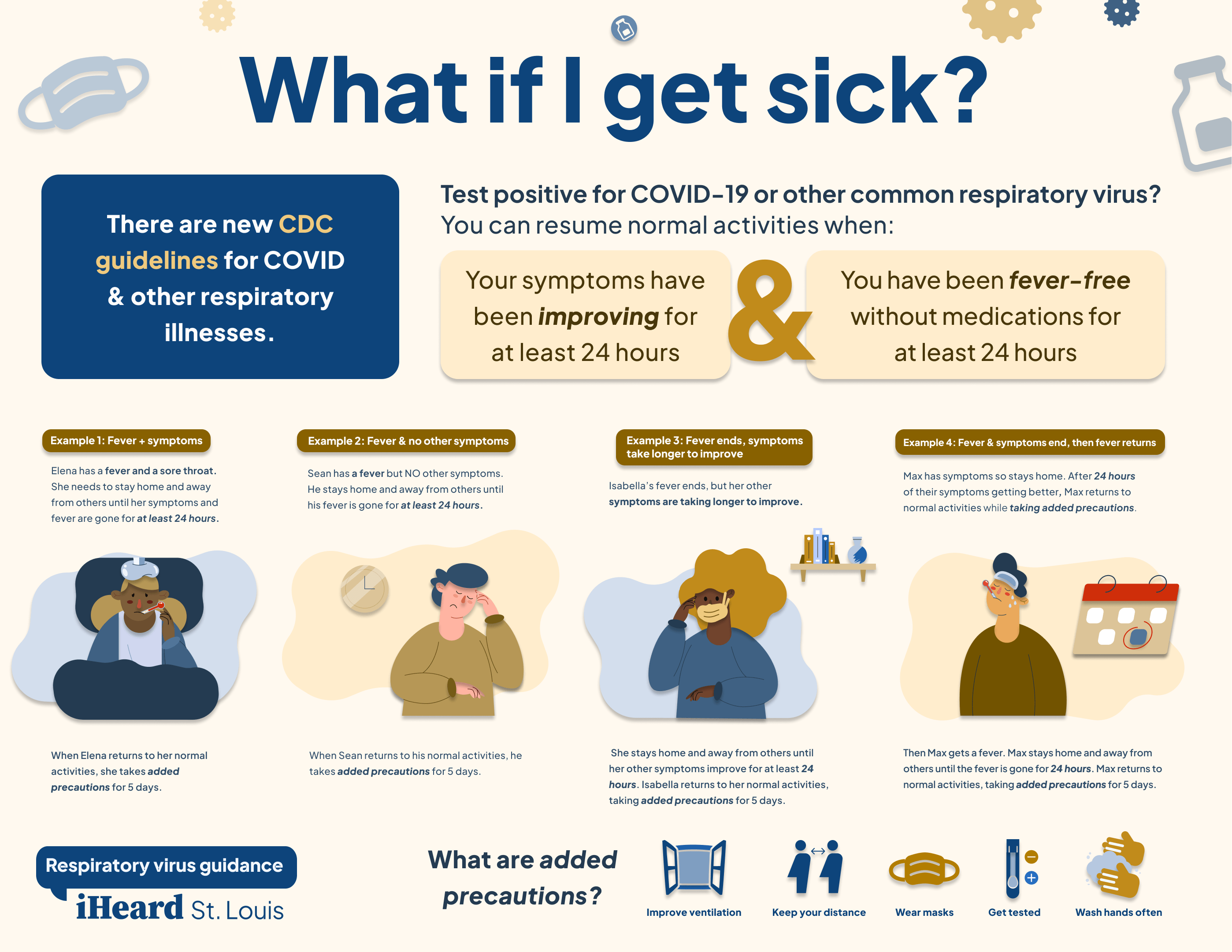On March 1, the Centers for Disease Control and Prevention (CDC) updated its isolation guidelines for COVID and other respiratory infections. In a survey of 421 adults in three states (MD, MO and NE) conducted March 9-11, 58% had heard about the change.
However, African American respondents were less likely to have heard about the new guidelines than Whites (54% vs 70%), as were Hispanic adults compared to non-Hispanics (49% vs. 60%).
The new CDC guidance recommends that people stay home and away from others until their COVID or other respiratory symptoms are improving, and they have been fever-free for 24 hours without medications. Prior guidance called for 5 days of isolation for COVID infections.
More survey respondents agreed with the change than disagreed (32% vs 23%); 46% said they had no strong opinion either way. Men and women differed in their reactions:
- Women were equally split in agreeing or disagreeing with the change (30% vs 29%);
- Men were more likely to agree than disagree with the change (35% vs 13%).
Most respondents (69%) said the change had no effect on their trust in the CDC; 18% said it made them trust the CDC less, while 13% said it made them trust CDC more. Women were more likely than men to say it made them trust CDC less (23% vs 12%).
Community organizations in St. Louis can use the social media resources below to:
- Spread the word about the new guidance, especially to African American and Hispanic members of your community; and,
- Explain why the change was made, especially to women, who were more likely to disagree with the new guidance.
This week’s report is based on responses from a panel of adult residents of Baltimore, MD (n=180); St. Louis, MO (n=153); and Omaha, NE (n=89), surveyed from Saturday, March 9 to Monday, March 11, 2024. Explore these data and more at iHeardSTL.
Download the graphics below to share about this topic.
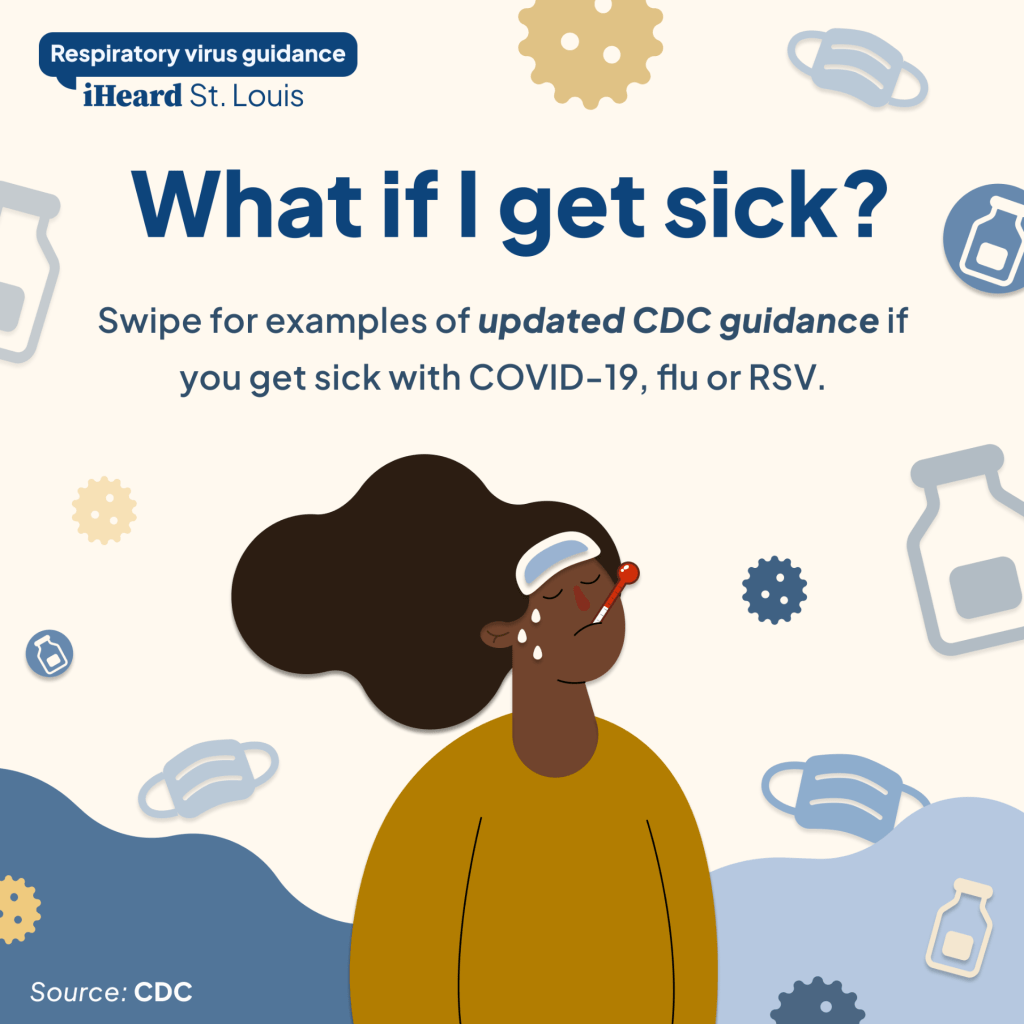
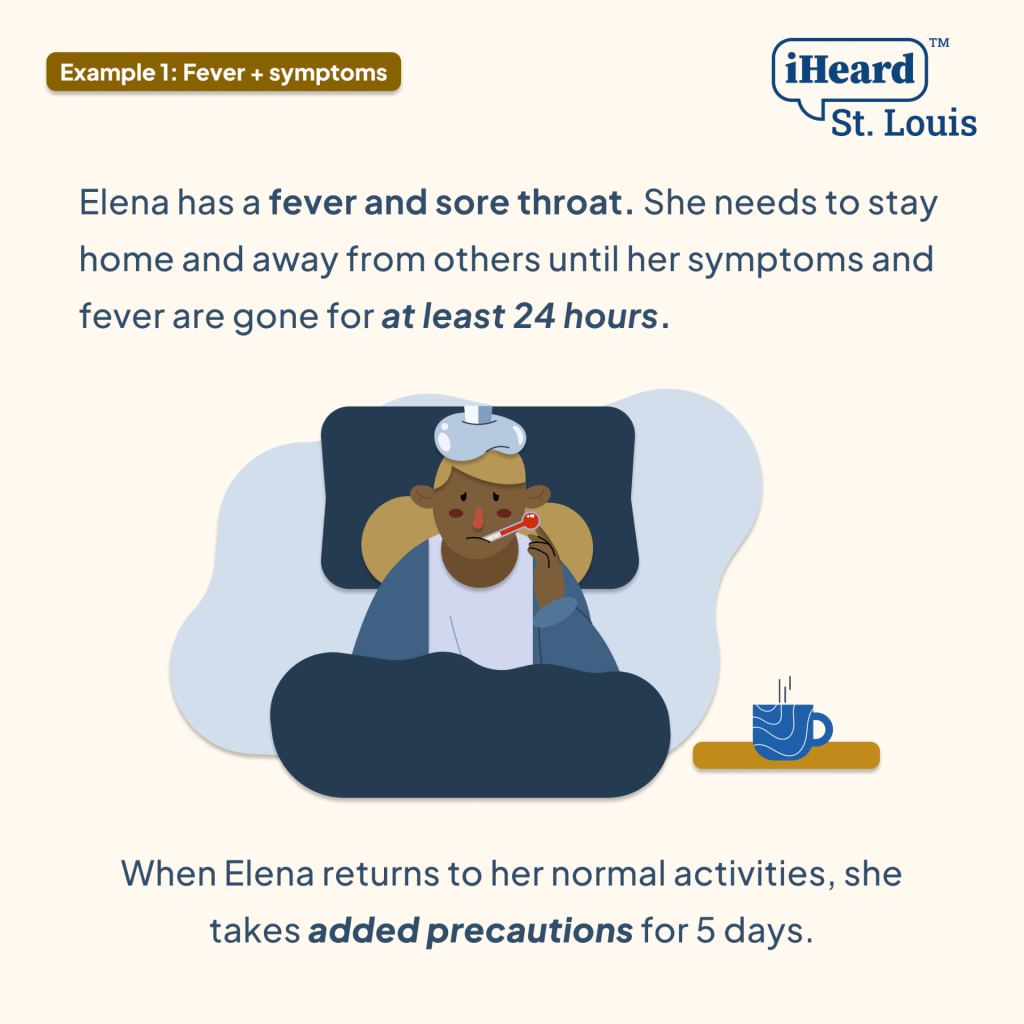
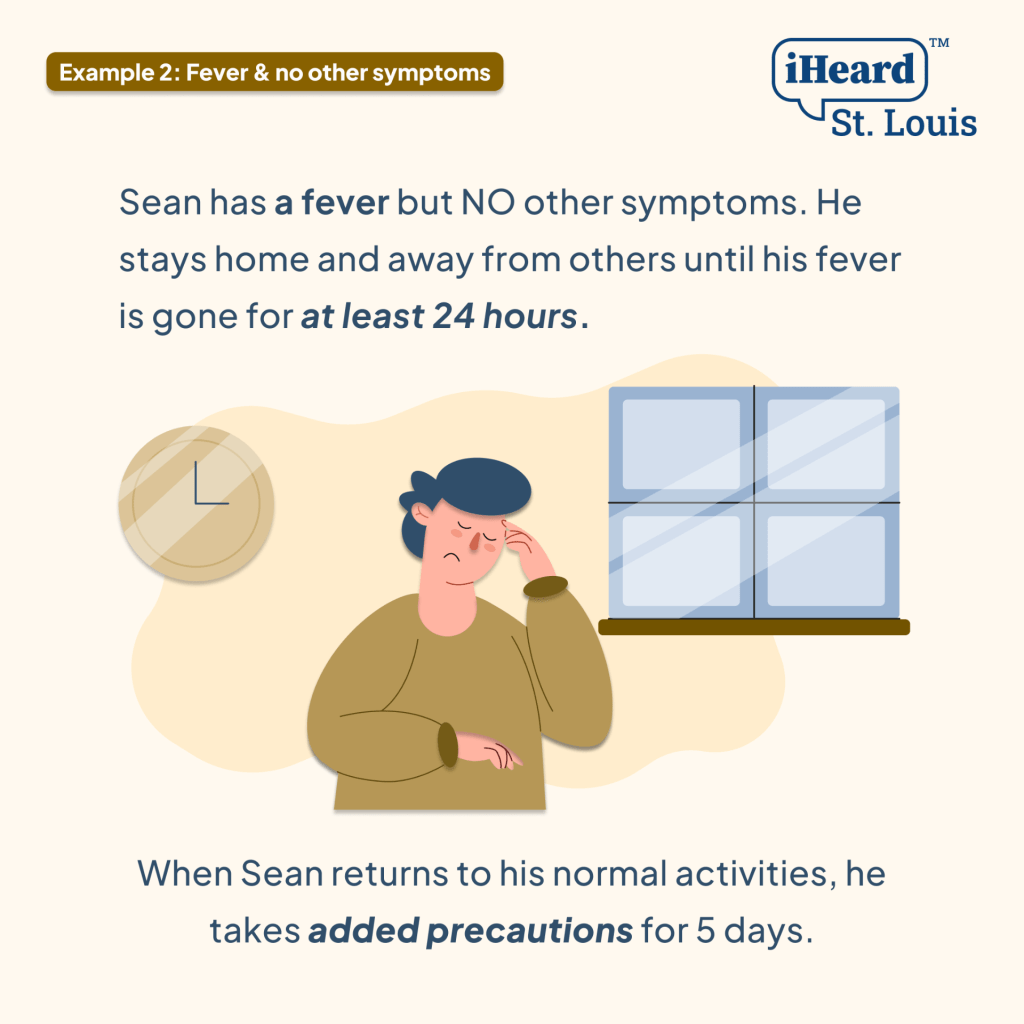
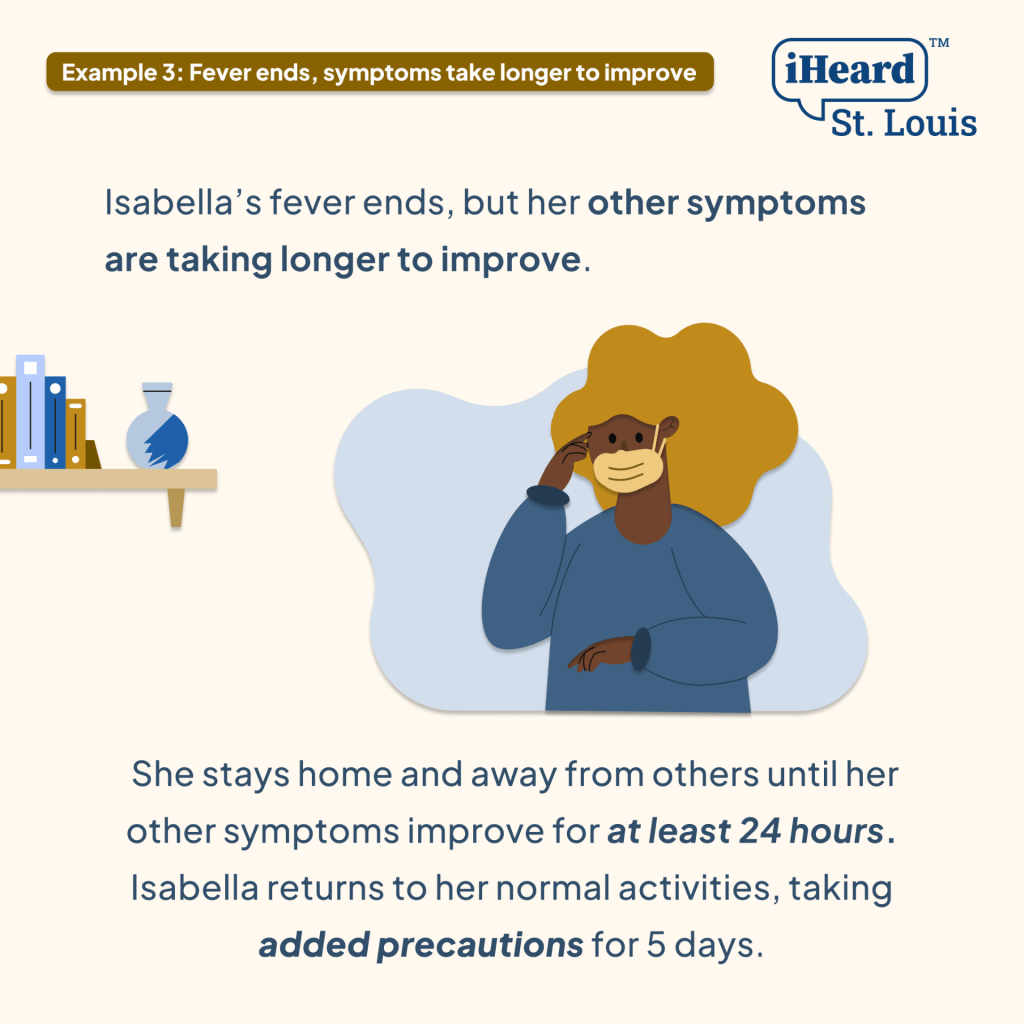
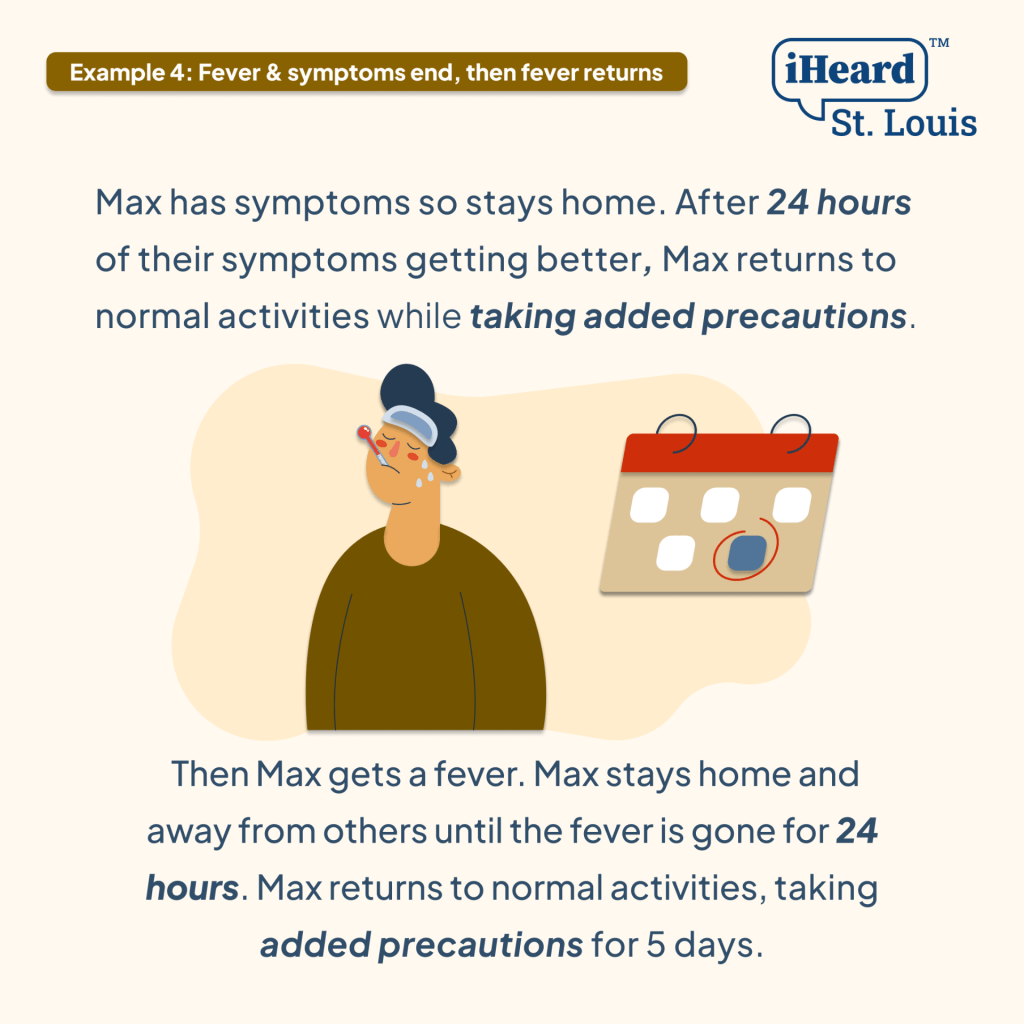
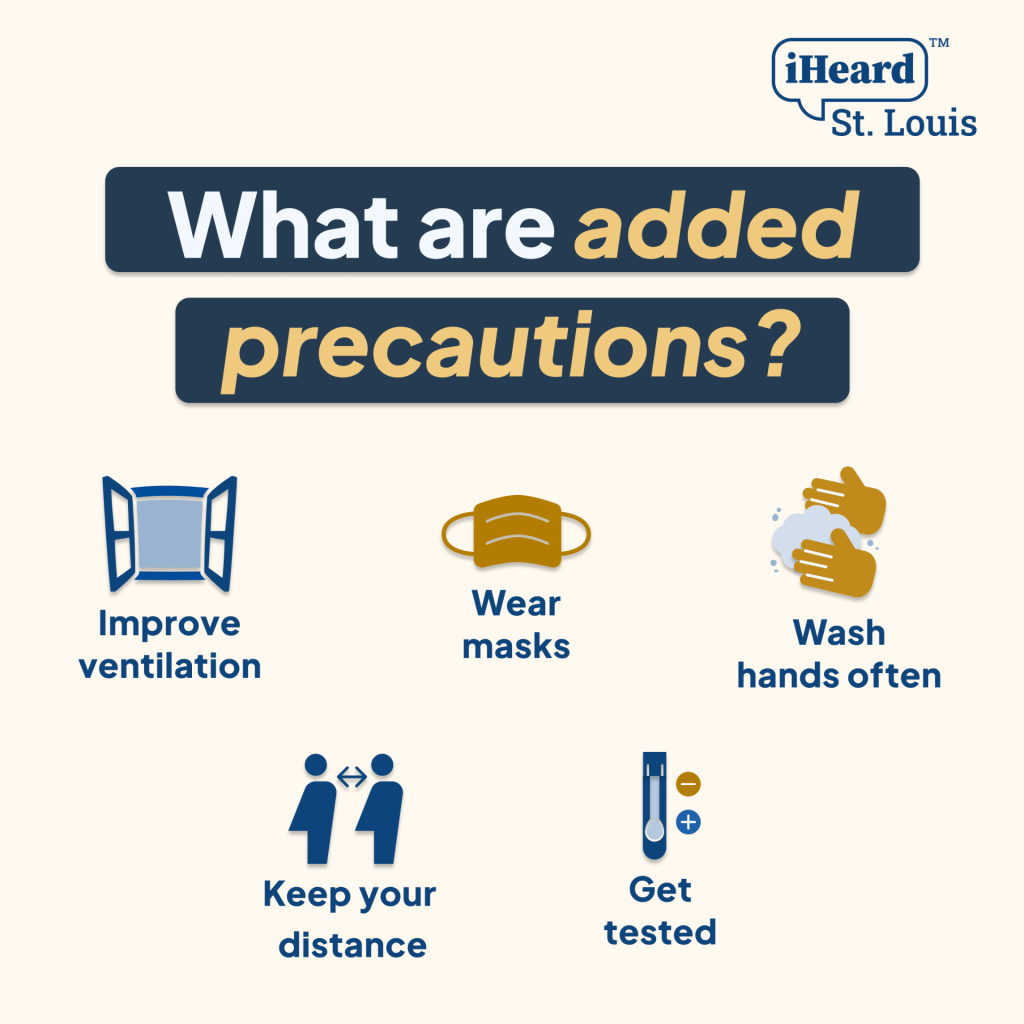
Suggested Caption:
As of March 1, the CDC updated guidelines for respiratory illnesses, such as COVID-19, influenza, and RSV. Take a look at Elena, Sean, Isabella, and Max’s situations for examples on how to navigate the new guidelines! The updated guidelines can be found at: https://www.cdc.gov/ncird/whats-new/updated-respiratory-virus-guidance.html
#iHeardSTL #COVIDGuidelines #CDC #STLHealth #RespiratoryIllness
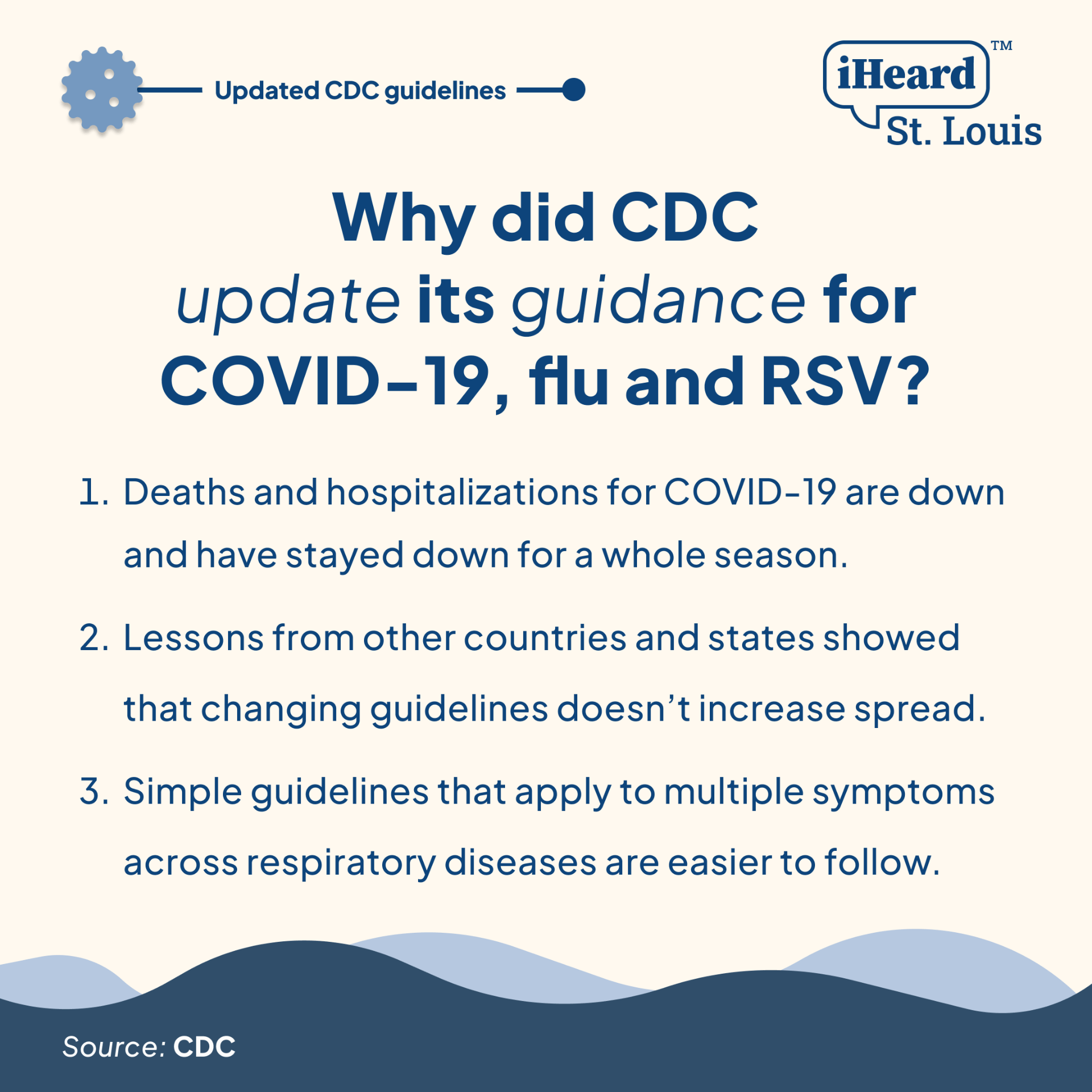
Suggested Caption:
Why did the CDC recently update guidelines for respiratory illness? Here’s what the CDC tells us. The updated guidelines can be found at: https://www.cdc.gov/ncird/whats-new/updated-respiratory-virus-guidance.html
#iHeardSTL #COVIDGuidelines #CDC #STLHealth #RespiratoryIllness
